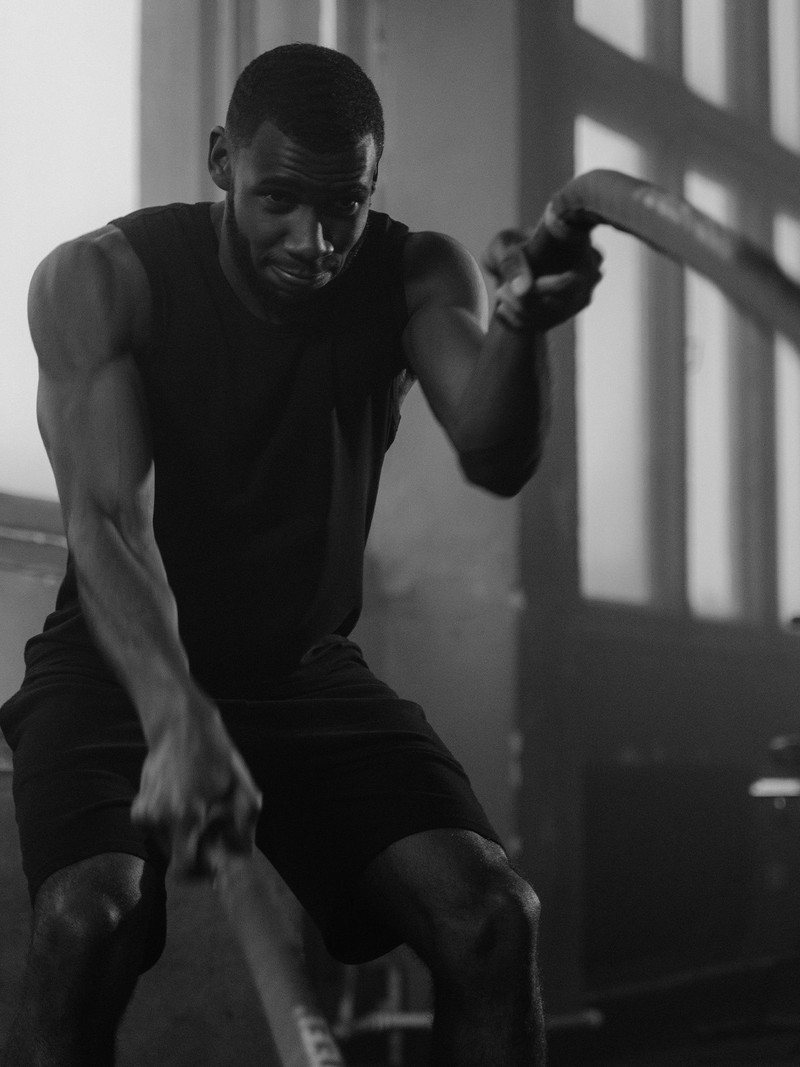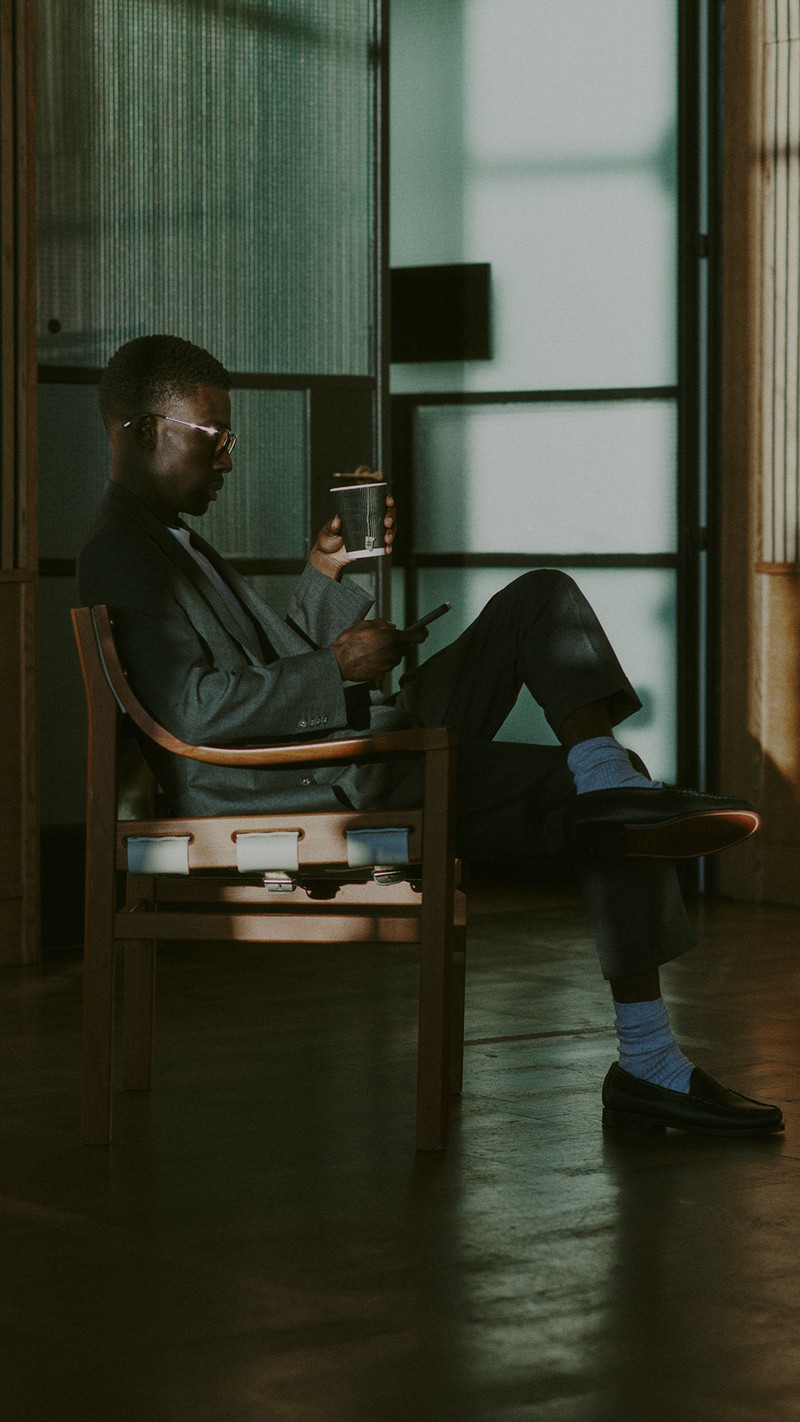
What The UK’s Best Trainers Do Differently Now
Josh Davies
PT at Aimee Victoria Long
Fuel first, then train. One of the biggest changes I’ve made is fuelling before training, not after. Having carbs and protein beforehand gives me more output in the session – it’s a noticeable difference. As for supplements, creatine is top of the list – it’s well researched, effective and simple to take. I’ve also added magnesium glycinate in the evenings to support deep sleep and next-day recovery.
Training needs to energise you – not exhaust you. Think meaningful warm-ups, quality reps in strength blocks and conditioning that serves a purpose. The goal isn’t to crush every session – it’s to recover, adapt and repeat. I rotate intensities throughout the week and factor in breathwork, sleep and stress management just as much as the lifting.
Mobility should be active – and it should serve your training. I don’t treat mobility as a standalone routine – it’s integrated. Think controlled articular rotations and loaded end-range holds – things that challenge control and range under tension. It’s about improving how you move under load, not just ticking a flexibility box. Mobility should make you stronger, not just looser.
Visit AimeeVictoriaLong.co.uk
James Dabbs
founder of Dabbs Fitness
The goal is longevity, not burnout. Today, I’m far more attuned to stress, sleep and emotional bandwidth. Running a business is full on, and I can’t afford to be fried from my own workouts, so I train for function – to stay injury-free, conditioning to keep energy high, and enough structure to hold it all together.
We should all be focusing equally on strength, cardio, mobility and power. Most everyday athletes still lean too far in one direction. If you want to feel good, perform well and stay consistent long term, you need it all.
A great session should leave you energised, not exhausted. My ideal 45-minute session starts with explosive movements – like medicine ball slams – to light up the nervous system. I’ll then move into a heavy compound lift, like squats or deadlifts, paired with mobility or core work to keep things efficient. From there, I’ll hit a smart accessory superset – something like Romanian deadlifts with overhead pressing – followed by a solid pulling pattern, such as rows or weighted pull-ups. I finish with five minutes of short, sharp conditioning – ski erg intervals, sled pushes or assault bike sprints. It’s about sequencing your training in a way that hits strength, stability, movement quality and conditioning – without tipping you over the edge.
Fuel is foundational. I eat protein and seasonal veg with every meal, and never skip meals on busy days, something I used to do. I keep biltong and boiled eggs on hand, and veg boxes help me stay consistent. There’s no secret sauce – just good habits that support performance.
Visit DabbsFitness.com
Dalton Wong
PT
Heart rate training is making a comeback. My training blends cardio, strength and endurance, and a large part of this focuses on heart rate training. On zone 1 and 2 days, I walk long and steady with my dogs; for zone 3, it’s treadmill cardio; and zone 4 is for those high-intensity intervals on the VersaClimber or the assault bike. My VO₂ max has improved massively – and my cardiovascular system’s never felt better.
Rucking is underrated. I’ll wear a weighted vest and walk around Hyde Park or hit an incline treadmill when the weather isn’t great. Rucking is traditionally done with a weighted pack, but a vest distributes weight more evenly than a ruck, and adds just enough load to turn a walk into a serious workout.
Mobility isn’t optional. It’s woven into everything I do with clients. It’s what allows the body to move freely and age well. I also give clients mini mobility routines they can do daily – especially important if they’re sat at a desk all day.
Nutrition is my number-one recovery tool. On high-intensity days or before jiu-jitsu, I’ll use electrolytes. My pre-workout is usually a banana – not caffeine – to give me the right kind of sugar boost. Afterwards, I go for a shake with protein, carbs and a little fat to tide me over until the next meal. On hard cardio days, it’s all about getting enough carbs, while on strength days, I bump up healthy fats to help with inflammation. The one non-negotiable is hitting my protein target – 150g a day.
I’ve started tracking my hormone levels. As I get older, keeping an eye on testosterone and overall hormone health is a crucial part of staying in shape and feeling good. It’s about long-term performance, not just aesthetics.
Visit TwentyTwoTraining.com
Matteo Massaini
trainer at Pillar Wellbeing
Movement, nourishment and recovery are the pillars you should focus on. Making sure all are in balance is key. If you’re in a high-stress period, maybe you don’t need more intensity, and should instead focus on better sleep and more structured movement. Whether you’re an athlete or not, intentional programming and a clear focus are key. Health and fitness aren’t one-size-fits-all.
You need to learn to say no. Smarter training goes beyond the gym. If I’m prepping for a race or competition, I won’t stay out late and will say no to invites. Recovery becomes sacred. Burning the candle at both ends doesn’t make you more disciplined – it burns you out.
The ideal workout is simple and structured. I’d start with ten minutes of mobility and activation, focusing on the muscles you’ll use in the session, whether it’s hips before squats or spine work before an upper-body session. Then 30 minutes of strength work – big compound lifts, good tempo and proper form. I’d finish with a cool-down that combines breathwork and more mobility – ten minutes to bring everything back into balance.
Visit PillarWellbeing.com & follow @PillarWellbeing
Omar Mansour
PT at KXU
I’m no longer chasing volume – I’m chasing intent. Over the last year, my approach has flipped. I’m not trying to do more – I’m trying to do it better. Instead of maxing out volume and intensity, I’m focused on efficiency and precision. It’s about removing the ego from training. I’d rather do less with purpose than more without clarity.
I now train in seasons, like athletes do. I’ve introduced a seasonal structure to my training – think performance phases, strategic downloads and movement blocks tailored to energy, goals and lifestyle. It’s about tweaking training for real life, and it makes consistency and progress more sustainable.
Assisted tempo runs are a gamechanger. Using a treadmill for a tempo run is a smart way to nail form, hit faster paces safely and build confidence. They’ve become a secret weapon in HYROX prep for my clients.
Training smarter means knowing when to pull back. I’ve replaced random HIIT circuits with zone-based conditioning, mobility resets and strength sessions that support, not sabotage, recovery. Smarter training equals more longevity, fewer injuries and better results.
Sleep and stress management trump fancy recovery tech. The best recovery tools are free – sleep, walking, structured rest days, and checking your nervous system, not just your soreness. If your sleep, hydration or nutrition are off, no tech can fix that. I see people obsessing over gadgets instead of focusing on the foundations. The simple stuff works – always has.
Visit OmarMansour.co.uk & follow @MrOMG
Mark Anthony
PT at V London
Using data can get you better results. Over the last year, I’ve doubled down on precision. For both me and my clients, I now use data – from blood tests to wearable trackers – to shape everything. It takes the guesswork out and means every session, supplement and recovery protocol is tailored for real impact.
Training smarter means knowing when to dial it back. High-intensity training has its place, but it’s not sustainable every day. Now, I balance tougher sessions with LISS (low-intensity steady state) cardio, and build in proper recovery using tools like infrared saunas and the MiHigh sauna blanket.
Cold water and breathwork are my recovery staples. The combination is powerful – it resets the nervous system, builds mental resilience and helps you stay calm under pressure.
Boxing and spin studios are out. People want something bespoke, something that works for them. Even HIIT is evolving – more people are gravitating towards formats like HYROX or personalised strength coaching.
Visit V-London.co.uk
Tom Brown
PT & Founder of 1st Class Bootcamp
The biggest shift in my philosophy has been around enjoyment. It sounds obvious, but so many people are following plans that look good on paper but feel like punishment in practice. If you don’t like the way you’re training or eating, the chances of it sustaining long term are close to zero. Instead of chasing an ideal routine, I encourage clients to tune into what genuinely makes them feel good – not just during the workout, but afterwards too. It might be strength work, hiking, dance or group classes – the form doesn’t matter as much as the feeling. I’ve moved away from rigid programmes and have leaned into a more instinctive style of movement – boxing, swimming, running, lifting, bodyweight flows – whatever supports my energy and resilience.
Prehab matters just as much as strength or cardio. The next evolution in training is understanding how your body moves before you push it. At our bootcamps, we start every day with 35 minutes of focused mobility, breathwork and nervous system prep. It sets the tone and helps people reconnect with their bodies.
Right now, I’m rating time under tension. That means slowing down reps, adding pauses and holds, and focusing on control rather than intensity. You don’t always have to lift heavier to get stronger – you just need to challenge your muscles in smarter ways. When you pair that with functional compound lifts, mobility flows and short bursts of cardio, you’ve got a session that’s not only effective, but sustainable. Walking is also underrated. It’s one of the easiest and most effective ways to boost mood, improve cardiovascular fitness and support overall health.
Visit 1stClassBootcamp.com
Paul Mills
YOUR PT & former world champion combat athlete
We’re moving away from aesthetic goals. Mental health, mobility, longevity and functional strength are the new pillars of fitness. For most of us, that means a more holistic approach. With clients, I’m programming more natural movement patterns that mirror daily life – think squatting, pushing and pulling.
Eccentric tempo training is my secret weapon. Slowing down the lengthening phase of a lift stimulates muscle building, and improves stability and control in a way most programmes overlook. You get strength and injury prevention in one go – and better results without doing more.
I never talk about rest days – it’s always active recovery. That could be a swim, a long walk, low-intensity cardio or yoga. Anything that boosts circulation, lowers inflammation and supports the nervous system. Nutrition is also critical, and I’m not anti-carb or anti-fat, as both are essential when used properly. My approach now focuses on nutrient density and minimal ultra-processed foods.
Don’t be lured by online PTs. AI has elevated what’s possible in personal training, but it’s also exposed how many cookie-cutter plans are being sold online. Too many remote coaches are recycling workouts without context or care. Clients are catching on. They want personalisation and results rooted in science. In this new landscape, I think we’ll see a return to real expertise – coaches who can adapt, think critically and deliver tangible progress will stand out.
Visit PaulMills.co.uk
DISCLAIMER: We endeavour to always credit the correct original source of every image we use. If you think a credit may be incorrect, please contact us at [email protected].

